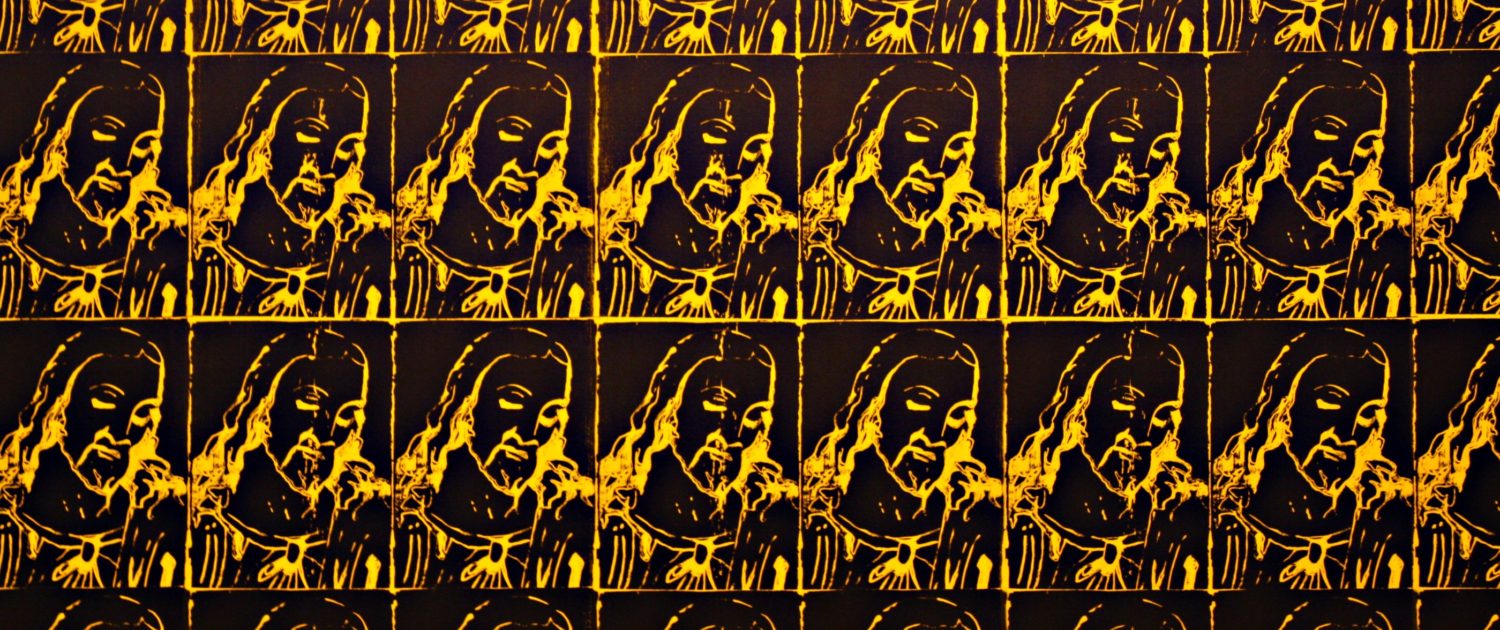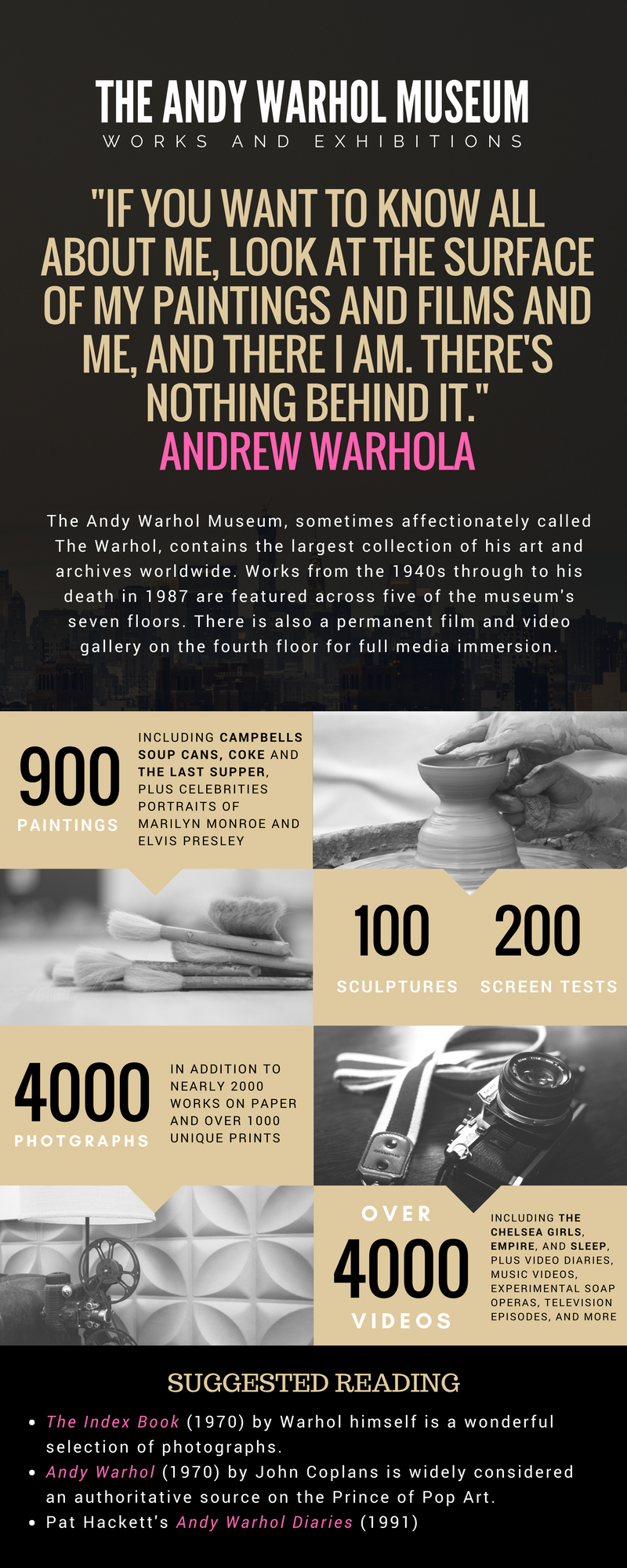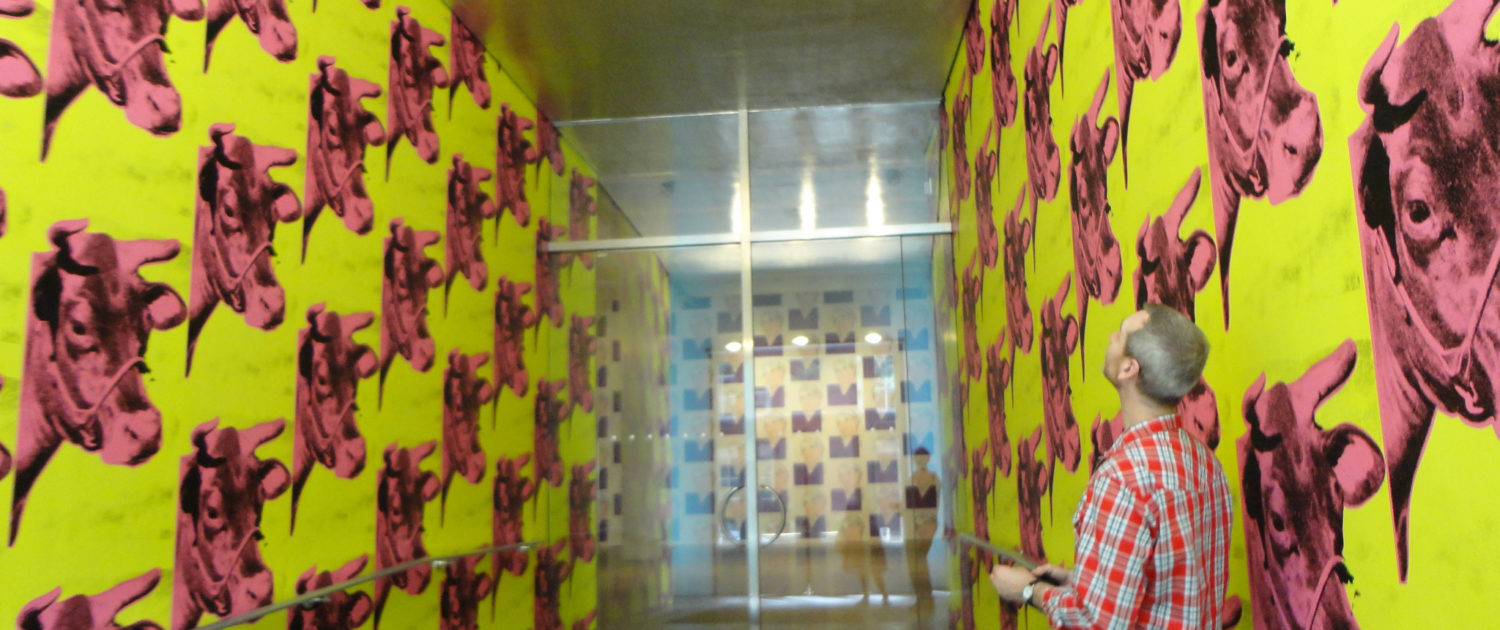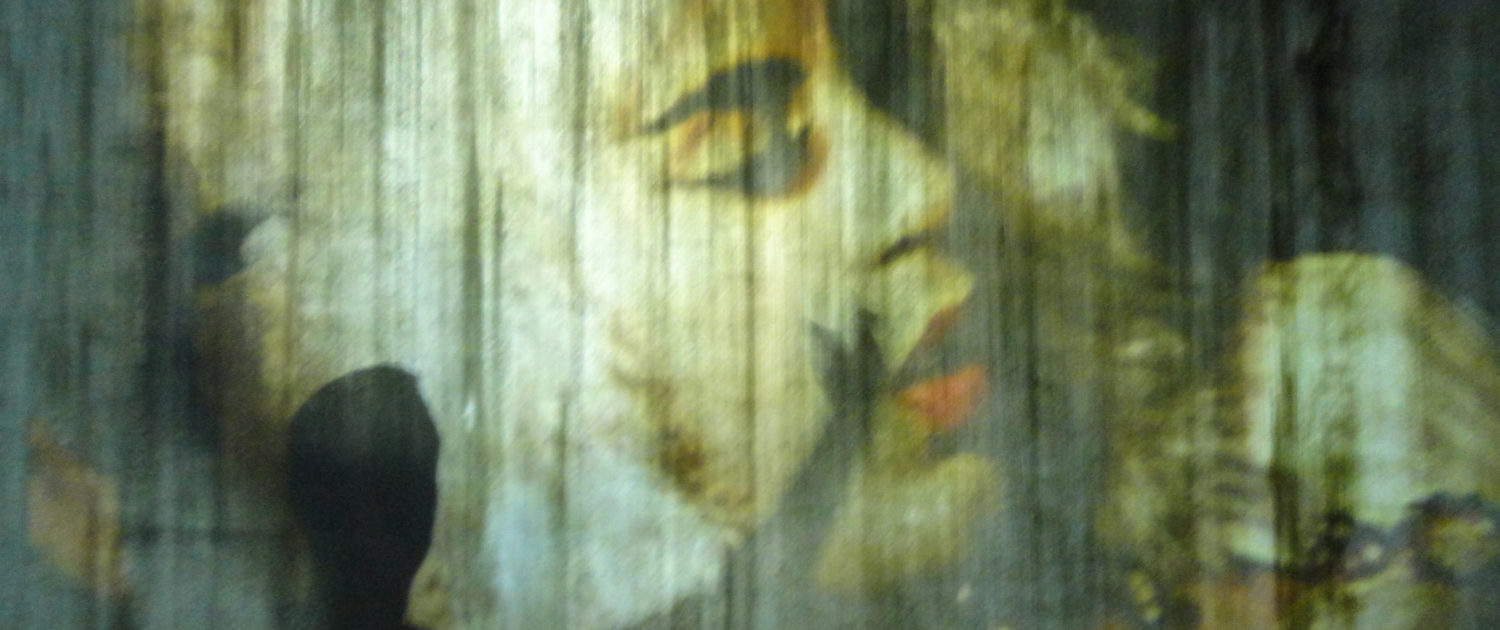The Andy Warhol Museum
“Andy Warhol’s ideal society has crystallized round him and learned to love his entropy,” said famed art critic Robert Hughes. Perhaps the greatest crystallization of this phenomenon is the seven-story treasury of Warhol’s works located in his birthplace of Pittsburgh, Pennsylvania. The Andy Warhol Museum is the largest museum dedicated to a single artist in North America.

Andy Warhol Museum | Gallery Paintings
From the time Warhol began developing photos in his parent’s fruit cellar until his death in 1987, he amassed an unrivaled collection of moving images, films, paintings, screen prints, personal portraits, programs for cable television, and music videos. The Warhol holds the largest collection of his art and archives worldwide.
History of the Andy Warhol Museum
Warhol once quipped that he would like to die in his blue jeans. Instead, he died in a hospital gown after a gallbladder surgery. Two years later, the Carnegie Institute announced plans to build a museum that would be “the global keeper of Andy Warhol’s legacy.”
Opening night was a 24-hour party that rivaled those of Gatsby. Warhol was not granted his wish of dying with his legs in Levis. However, the museum has commemorated his life and death in such high fashion, it more than compensates for the unstylish hospital gown.
The building chosen to house the Andy Warhol museum was built in 1911. It was a distribution center for milling and mining equipment. As such, it suits his love for “mechanical” art and his philosophy that, “Being good in business is the most fascinating kind of art.”

Andy Warhol Painting | The Andy Warhol Museum
The Andy Warhol Museum was a joint venture between the Carnegie Institute, the Dia Foundation, and the Andy Warhol Foundation for Visual the Arts. It is one of the four Carnegie Museums of Pittsburgh. To prepare for its opening, it underwent a $12 million renovation at the hands of architect Richard Gluckman. The AWFVA and Dia Foundation donated more than 1500 of Warhol’s works worth an estimated $80 million. Over the years, that donation has grown to about 3000 works.
Astonishingly, the opening weekend attracted more than 25,000 visitors. The museum now sees about 100,000 visitors each year. The venue also hosts numerous musical artists, classes and studio space for young artists, and a vast number of special exhibitions. It has played a significant role in changing the conservative city’s understanding of gender and the fluid nature of sexuality.
Important Works at The Warhol
Warhol has been one of the greatest contributors to the visual arts. In line with that tradition, we have put the significant works at the Andy Warhol Museum in an infographic.

Works Located Outside The Warhol
The MOMA in New York City often features Warhol’s Tomato Soup and Marilyn Monroe. His 1986 Self Portrait is on display at the Museum of Fine Arts in Houston, Texas. Other notable museums with prominent works include the Guggenheims in both New York and Bilbao, the J. Paul Getty Museum in Los Angelos, and the National Gallery of Art in Washington, D.C.

Hallway Gallery | The Andy Warhol Museum | Pink Cows
Due to his prolific nature, Warhol’s works spread across the globe. About 150 museums feature his art. There are also a number of traveling exhibitions. It’s nearly impossible to know how many locations advertise his art at any given time.
For a comprehensive list of museums and exhibitions, check out these lists compiled by the Andy Warhol Foundation and Artcyclopedia.
Unsurprisingly, there are still Warhols turning up in the nooks and crannies of the world. One fascinating example is Little Electric Chair, which Alice Cooper forgot about owning after more than 40 years in storage. Undoubtedly, this isn’t the only relic that has escaped Cooper’s addled mind of the 1970s.
Quirky Personal Habits of Andy Warhol
Warhol took pride in being a mystery wrapped in an enigma. He once remarked, “I never give my background, and anyway, I make it all up differently every time I’m asked.” This may seem paradoxical for a figure who openly expressed his love for fame and attention.
As much as he enjoyed the limelight, he also retreated to the shadows. Some of his friends recalled that during some parties, he would insist that everyone wear a mask. They suspected that while he wanted to view himself as the life of the party, he needed to do so from behind the protected anonymity of a mask.
While it can be difficult to separate fact from fiction, as it is with all figures who reach near-mythic status before their death, we have compiled a list of interesting personal habits that magnify Warhol’s intrigue.

Andy Warhol Portrait | Gray Wig
The Short List of Warhol Eccentricities
- Warhol compulsively recorded his conversations. He even lovingly referred to his tape recorder as his “wife.”
- He collected taxidermy, including a stuffed lion, peacock, penguin, moose head, and a Great Dane named Cecil. For years, the Dane stood silent watch over The Factory, his NYC artist studio.
- Warhol’s drag-queen alter-ego was “Drella.” He devised the nickname, a portmanteau, by blending “Dracula” and “Cinderella.”
- He had a powerful foot fetish, apparent from his numerous drawings of feet. One of the more bizarre objects in the Time Capsules at The Andy Warhol Museum is a mummified human foot from Ancient Egypt.
- Finally, to the surprise of many, Warhol was a practicing Byzantine Catholic. Pope John Paul II invited him to the Vatican in 1980.
This final factoid is something that has been somewhat obscured from public knowledge. Perhaps this is because the bohemian circles Warhol frequented considered his religious beliefs unfashionable.
In fact, the newly appointed director of the Andy Warhol Museum has vowed to increase the amount of exposure visitors receive concerning Warhol’s faith.
Director Patrick Moore wants to provide the public with a challenge to synthesize Warhol’s lifestyle as an openly gay man, traveling in highly liberal circles and yet retaining a deeply religious faith. In doing so, the museum will further the artist’s legacy of defying traditional constructs and viewpoints.
If you’d like to leave your own input on the new direction of The Warhol, you can tweet them!

Andy Warhol Video | Moving Image Collection | The Andy Warhol Museum
Hamilton Selway and Warhol’s Legacy
The Hamilton Selway gallery continues Warhol’s monumental legacy by featuring numerous portfolios, including collages, canvases, drawings, and originals. You can view our collection, shop, or get in touch.

